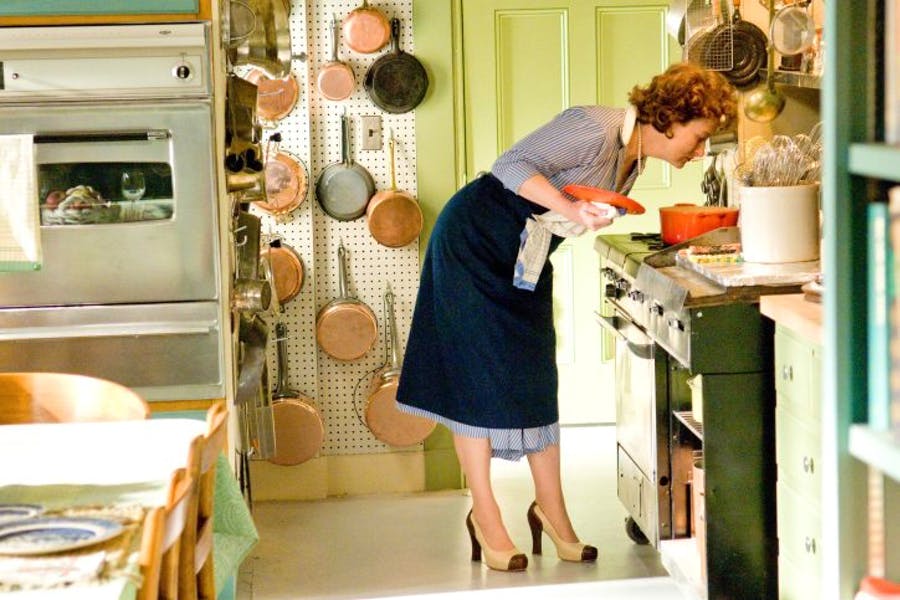If you’re trying to determine someone’s class and the accent is hard to place, you could do worse than check the brand of their pans. Le Creuset has been a staple of upper-middle class British kitchens for years – the sort of Eurocentric brand that contains just a hint of francophile exoticism whilst conjuring up the British comfort food of old: casseroles, stews and soups. And, if Instagram is anything to go by, Millennials are also cottoning onto the appeal. With the rise of #cottagecore and the boom in home cooking that came about over lockdown, Le Creuset doesn’t seem to be disappearing any time soon.
While to own a Le Creuset is to now open yourself up to bourgeois ridicule, there is no need to feel abashed, for serious foodies have been espousing the brand’s culinary credentials since 1925. Their Dutch ovens—or as the French term them, “cocottes”—are a triumph of engineering. Thick-walled, heavy-bottomed and with tight-fitting lid they retain heat and lock in moisture.
But what foodies love most is the enamelling: it acts as a sort of non-stick, which just gets better over time as a ‘patina’ builds, but somehow succeeds in not inhibiting the formation of the caramelised bits you get when browning meat or veg. For it is these nuggets that help give Le Creuset-cooked stews their superior flavour. The heat retention gives you the meltingly tender meat you deserve after hours of slow cooking—and when served at the table, happily keeps food hot enough for seconds.
All of which begs the question – are they really better than the growing number of copycat versions? Every supermarket in Britain boasts Le Creuset replicas: Aldi’s cast iron cookware range flew off the online shelves in days, whilst Wayfair boasts their own version for as little as £22. And yet demand for the real deal hasn’t abated: the recent Le Creuset August factory sale was met with an air of excitement usually reserved for Glastonbury tickets.
The design seems to be a foolproof formula – each dish is unique, made in France and comes with a lifetime guarantee. And the formula has hardly changed for centuries. But the company caused a buzz a few years back when it decided to change the material of the lid knob from black plastic to stainless steel so it could withstand even higher temperatures (prompted by millennials who took to the internet to point out that the classic knob’s 375 Fahrenheit limit wasn’t high enough to make no-knead bread).

Le Creuset: Iconic cookware that comes at a price
Their weight is also what sets them apart from their many imitations—each dish weighs about 5 kg. Should your Banham alarm fail you and your home happen to be burgled the casserole pan will provide your best chance of fighting off the intruder. And they’re oh-so-handsome, coming in a range of bright colours for which the brand is famous. Volcanic Flame is the most iconic, inspired by the colour of molten cast iron. Or opt for one of the newer additions to the colour palette—like Meringue, Satin Black or Flint— for a more twenty-first century chic finish.
They don’t come cheap. You’ll need at least a 22cm. one for proper family-sized casseroles and that’ll set you back over £200. But look out for the odd deal: I managed to bag a “marmitout”—a now-discontinued ‘two in one’ combo of saucepan with skillet, the latter to be used either on its own or as a lid—for £99 thanks to a tip-off from a friend in Marylebone. I left the office and jumped straight into a cab in the middle of the working day when I received word. I know a deal when I see one.
Le Cresuet is not without its luxury rivals. Staub make world-class Dutch ovens too and have a slightly more angular shape that give them an arguably more modern aesthetic. But that is rather like pointing out that Ferrari can give Rolls Royce a run for its money in automobile construction. It sort of misses the point.
What then explains Le Creuset’s timeless appeal? For millennials, being potty about pans is a badge of honour; and owning a Le Creuset is proof of one’s sophisticated domesticity. You may eat takeaway five times a week, but so long as there’s a slow-cooked bean casserole with miso-tahini freekeh in the Le Cresuet for the Sunday lunch Instagram post you’re swell.
As for me, I like to think cooking in a Le Creuset is a way to stick two fingers up at the twenty-first century’s fast and furious eating culture, the corporate rat race, and the latest celeb chef-endorsed range of shoddy pans. I just need to see my Le Cresuet sitting on the stove, bubbling merrily away, to feel I’m living in a simpler, happier time.






Comments